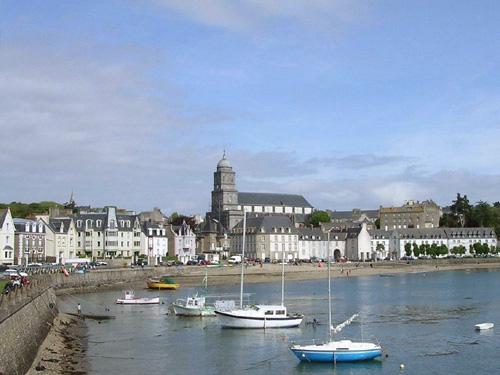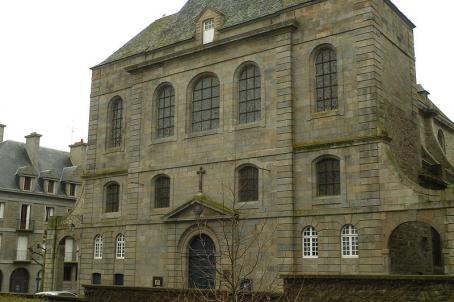Church of Sainte-Croix de Saint-Servant

This 18th century Roman Catholic church is located in the Saint-Servan district. It stands out in the landscape with its blue granite architecture and its square tower topped by a dome. Inside there are 2 organs classified as historical monuments. The church is a vast building whose first stone was laid in 1715, replacing the old parish church of Saint-Servan which had become too small, and dated from the 16th and 17th centuries. All that remains of the old church is an arcade with a small human head in the northern base of the Holy Cross Church.
About this building
Edifice built from 1715 to 1743 by Fréguier, the King's engineer. It consists of a nave flanked by aisles. The nave is preceded by a tower forming a bell tower on a porch. The door is decorated with a pediment supported by four columns. The nave is separated from the aisles by a series of seven arcades supported by massive square-section pillars, falling on moulded cuttings. The vaults are formed by flat, painted ribs falling on a very projecting cornice. The choir is covered by a ribbed dome with wide bands and sits on an open roundabout with large arcades. Around the roundabout there is an ambulatory communicating with the aisles. Most of the interior decoration dates from the 19th century. During the Revolution, the building was devastated. From 1795 to 1801, it was used as a fodder barn, then reassigned to worship in 1801.




